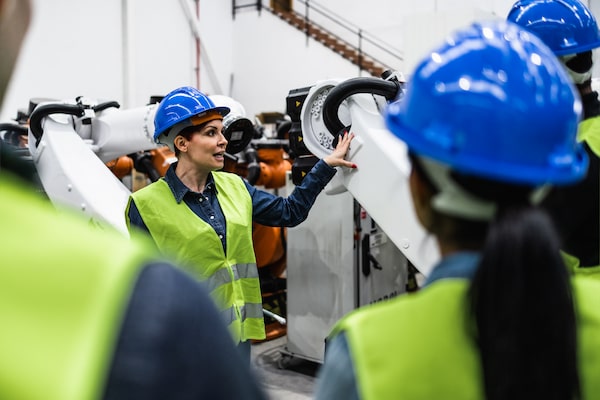
Artificial intelligence and automation in manufacturing and construction are shifting how companies hire and train employees.Getty Images
In the auto industry, a metal car frame is forged by a symphony of manufacturing processes, from press forming and milling, to anti-corrosion treatments and welding. Nearly every step requires dedicated production equipment and skilled hands.
But as skilled work-forces move toward retirement, manufacturers – and nearly all other industries – are implementing artificial intelligence to tackle the talent shortages.
According to the IBM Global AI Adoption Index 2022 survey, nearly one in four companies adopting AI are doing so to combat labour or skills shortages. Xaba Inc., Toronto-based intelligent automation startup, is one of the companies helping bridge that gap. It’s developing a new manufacturing process that pairs AI with 3-D printing to manufacture car frames using sustainable materials.
CEO of Xaba Max Moruzzi says one of the challenges manufacturers face is the perception of the jobs themselves.
“Today, a big part of the manufacturing core is considered a job, not a career,” he says.
Mr. Moruzzi explains that AI and automation aren’t necessarily replacing workers, but they are changing the types of talent that companies can recruit. The technology that his company is developing is geared toward enabling workers to guide machines with voice commands, blending the human-AI connection for collaborative production and problem-solving.
He says it will help create more engaging roles for people in manufacturing and other industries. “Then you are attracting an incredible number of talent because they see a career, they see [themselves making] an impact,” Mr. Moruzzi says.
Industries across all disciplines are turning to emerging technologies to soften the blow of the skilled talent shortage, particularly in physically demanding jobs.
According to a KPMG Canada report, nearly nine out of ten construction companies see technology such as analytics, building information modelling and digital twins as viable ways to address labour shortages and improve productivity.
More broadly, the IBM AI index found 65 per cent of organizations are using AI to reduce manual or repetitive tasks, 45 per cent are looking to improve recruiting and human resources and 35 per cent are addressing skills gaps with tools that don’t require users to know how to code.
Joel Blit, a professor of economics at the University of Waterloo and expert on the economy of innovation and disruptive technology, says one of the key advantages of AI is its ability to allow organizations do more with less.
“These tools are supercharging people,” Mr. Blit says. “Now one person is able to accomplish way more using these tools than they could before these tools existed.”
They may also lower barriers to entry for people that may not already have the skills required to run a machine or execute a complex task. Instead, they just need communication skills. The rest gets developed on the job.
Still, the adoption of technologies like AI isn’t without impact. According to research by the World Economic Forum, frontier technologies and increased digital access are expected to drive job growth in more than half of the companies surveyed in its 2023 future of jobs report, while displacing jobs in about one-fifth of those companies.
Mr. Blit says the AI push is a different beast than previous pushes toward innovation. The adoption of industrial robotics predominantly affected the jobs of lower-skill workers, while the introduction of computers impacted back-office workers and more manual tasks.
Unlike those tech takeovers, AI is a cognitive tool capable of handling jobs traditionally reserved for higher-skilled workers.
“It’s mostly impacting the white-collar workers, the top end of skills distribution,” Mr. Blit says. “Anything that has a physical component, whether it’s a chef or a gardener, or a house cleaner, [or] trades like being an electrician, a plumber – I think all those things are relatively safe.”
Like Mr. Moruzzi, Mr. Blit sees technological adoption changing the nature of roles in the same way e-mail and computers changed the way people work. The IBM AI index found more than one in three organizations are already reskilling employees to work with emerging AI and automation software and tools.
As tech literacy in the work force increases, companies aren’t looking to fill lost jobs. Rather, Mr. Moruzzi argues, they’re actively building and shaping a more talented work force.
“Simultaneously, you are attracting talent and growing the talent on a daily basis for the job that they’re actually doing,” he says. “We’re enabling everybody to contribute.”